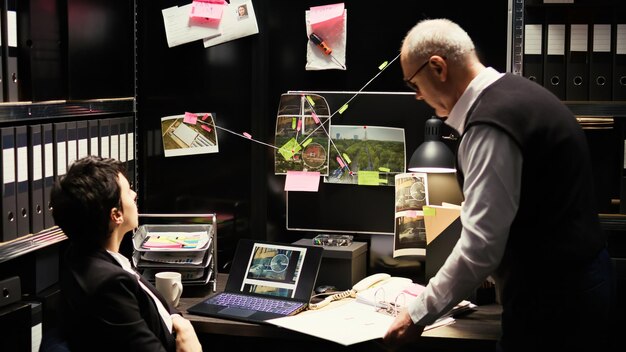Consumer Safety Spotlight Ep. 31:
Top 5
Hidden Dangers in Your Home
Welcome to episode 31 of Consumer Safety Spotlight. In today’s show, we will be discussing the top 5 hidden dangers in your home that might be putting your family at risk. These hazards are often overlooked, but they can cause significant harm if not addressed. Let’s get started.
Old Wiring
First, we have old wiring. Faulty electrical systems can lead to fires or electrocution. Make sure to have your home’s electrical system inspected every few years, especially if it’s more than 40 years old.
Carbon Monoxide
Second, we have carbon monoxide. This colorless and odorless gas is produced by appliances such as stoves and water heaters. Installing carbon monoxide detectors in your home can help prevent poisoning, which can be fatal.
Lead Paint
Third, we have lead paint. Older homes may contain lead-based paint. When this paint is disturbed, it can release toxic particles that can cause developmental delays and other health issues in children. Hire a professional to remove or encapsulate the lead paint if it’s present in your home.
Mold
Fourth, we have mold. This fungus can grow in damp areas like basements or bathrooms. Mold can cause respiratory problems and allergic reactions, especially in vulnerable populations like children and the elderly. Regularly inspect your home for mold and address any water leaks or excessive moisture to prevent its growth.
5. Falling Furniture
Lastly, we have falling furniture. Top-heavy items like bookshelves or TVs can tip over and cause injury or even death. Secure tall furniture to the wall, place heavier items on lower shelves, and keep remote controls and other objects within reach to reduce the risk of injury.
How to Protect Your Family
By being aware of these hidden dangers and taking preventative measures, you can help protect your family from harm. Regular inspections, maintenance, and safety precautions go a long way in ensuring the safety of your loved ones.
Stay Informed
That’s all for today’s episode. Stay informed about consumer safety issues and be sure to join us next time for another episode of Consumer Safety Spotlight.

Consumer Safety Spotlight:
Welcome to the Consumer Safety Spotlight series, where we delve deep into various aspects of consumer safety and provide valuable insights to help protect your family and home.
Why Home Safety Matters:
A safe and healthy home environment is essential for the well-being of families. It goes beyond just ensuring that appliances, electronics, and other household items function correctly. Home safety encompasses various aspects, from structural integrity to hazard prevention.
Structural Integrity:
Maintaining the structural integrity of your home is crucial, as it safeguards your family from potential dangers. Regularly inspecting and maintaining the foundation, roof, walls, windows, and doors can help prevent accidents and protect against harsh weather conditions.
Fire Safety:
Fire safety is another critical aspect of home safety. Installing smoke alarms, fire extinguishers, and practicing evacuation drills can help protect your family from the devastating effects of a fire. Additionally, keeping flammable items away from heating sources and ensuring proper electrical wiring is essential.
Hazard Prevention:
Preventing hazards in your home is an essential component of ensuring overall safety. Common household hazards include poisonous substances, choking risks, and falls. Keeping these hazards in check by securing cleaning supplies, storing medicines out of reach, and childproofing your home can significantly reduce the risk of accidents.
The Top 5 Hidden Dangers in Your Home
Your home, a place where you feel most comfortable and secure, might harbor some hidden dangers that could potentially threaten your safety and well-being. Many hazards are often overlooked due to their inconspicuous nature. Here’s a list of the top 5 hidden dangers in your home and some preventive measures to ensure a safer living environment:
Carbon Monoxide Poisoning
Carbon monoxide (CO) is a colorless, odorless, and tasteless gas that can cause serious health issues or even death. This silent killer is produced by common household appliances such as water heaters, furnaces, stoves, and generators. Installing a carbon monoxide detector near every sleeping area is crucial to safeguard your family against this hidden danger.
Electrical Fires
Faulty wiring, overloaded circuits, and outdated electrical systems can lead to electrical fires. These fires are often hard to detect due to their lack of evident warning signs. Regularly check your home’s wiring and appliances for any signs of wear, replace old appliance cords, and consider having a professional electrician assess the electrical system in your home.
Indoor Air Pollution
Indoor air pollution can originate from sources like cooking, cleaning supplies, and building materials. The American Lung Association reports that indoor air can be up to five times more polluted than outdoor air. Keep your home free from allergens and irritants by using natural cleaning products, properly ventilating rooms with good air circulation, and regularly replacing filters in heating and cooling systems.
Mold and Mildew
Mold and mildew growth is commonly found in damp areas, such as bathrooms, kitchens, and basements. These microorganisms can lead to respiratory issues and allergic reactions. Regularly inspect your home for any signs of water damage or moisture, properly ventilate rooms with adequate air circulation, and clean bathrooms and kitchens regularly to prevent mold growth.
5. Unsecured Furniture
Top-heavy bookcases, tall shelves, and unstable furniture can pose a tipping hazard, especially for young children. Ensure your furniture is securely anchored to walls or floors using brackets, wall straps, or other appropriate fasteners. Always consider the weight and stability of any furniture piece and position it in a safe location in your home.
By being aware of these hidden dangers, you can take preventive measures to create a safer and healthier living environment for your family.

Electrical Hazards:
Overloaded Power Strips and Extensions
Overloading power strips and extensions is a common electrical hazard that can lead to tripping circuits or even start a fire. Signs of overloading include the smell of burnt wires and frequent tripping of circuits. To prevent electrical hazards caused by overloaded power strips, it’s essential to limit the number of devices per strip and unplug unused items.
Faulty Wiring
Faulty wiring is another electrical hazard that can result in serious consequences. Common causes include aging homes and DIY jobs. Warning signs of faulty wiring include frequent power outages, flickering lights, and sparking outlets. To ensure electrical safety in your home, it’s crucial to hire a professional electrician for inspections and repairs. Regular inspections can help identify wiring issues before they become a hazard.
Contact with Water
Contact with water is a significant electrical hazard, increasing the risk of electric shock. To ensure safety, avoid using appliances near water sources, and unplug them when not in use. If you suspect water damage to your electrical system, do not attempt repairs yourself. Instead, contact a professional electrician immediately.
Hiring a Professional Electrician
It is essential to hire a professional electrician for any electrical repairs or inspections in your home. A professional electrician has the necessary training, knowledge, and experience to ensure electrical safety and prevent potential hazards. They can also provide valuable advice on energy efficiency and cost savings.
Conclusion
Electrical hazards, including overloaded power strips and extensions, faulty wiring, and contact with water, can lead to serious consequences. By following prevention tips and practicing electrical safety, you can minimize the risk of electrical hazards in your home.

Fire Hazards: Prevention and Safety
Fire Hazards:
Cooking accidents
Cooking is one of the leading causes of residential fires. Two common causes of cooking accidents are unattended stovetops and grease fires. Unattended stovetops can lead to boil-overs, which can easily turn into larger fires if left unchecked. Grease fires occur when oil or fat in a pan overheats and ignites, releasing smoke and potentially causing a larger fire.
Prevention methods:
- Supervise cooking at all times
- Install fire alarms in the kitchen and throughout the home
- Keep a fire extinguisher nearby
Space heaters and open flames
Space heaters and open flames, such as candles or fireplaces, also pose a significant fire risk. Space heaters can tip over, causing fires or burns. Open flames must be kept away from flammable materials and should always be extinguished before leaving a room or going to bed.
Safety tips:
- Keep a safe distance from space heaters and open flames
- Use proper ventilation when using space heaters or candles
- Never leave a space heater or open flame unattended
Electrical appliances and electronics
Overheating risks from electrical appliances and electronics, such as laptops or chargers, can also lead to fires if not used properly. These devices can generate excess heat, which can cause a fire if they are not given proper ventilation or are left on for extended periods.
Prevention methods:
- Unplug electrical appliances when not in use
- Use proper ventilation when using devices that generate heat
- Follow the manufacturer’s instructions for use and maintenance
Choking Hazards for Children:
Children are naturally curious and explore their environment through touch, taste, and exploration. However, this natural behavior can sometimes lead to dangerous situations, particularly when it comes to choking hazards. Choking is a serious health issue that can cause injury or even death. It’s essential for parents, caregivers, and educators to be aware of common sources of choking hazards for children and effective prevention methods.
Common Sources:
Small toys: Toys with small parts, such as balls less than 1.75 inches in diameter or marbles smaller than 1.4 inches, can pose a significant risk of choking for young children under three years old. Other hazardous toys include those with detachable small parts or those that can be easily broken into small pieces.
Food:
Food: Hard, small, or round foods like hot dogs, grapes, popcorn, and nuts can also pose a choking hazard for children. Cutting food into small pieces, cooking hot dogs thoroughly before feeding them, and avoiding giving young children foods that can easily be choked on are essential steps to prevent choking incidents.
Prevention Methods:
Supervision:
Providing constant supervision is the best way to prevent choking incidents. Parents, caregivers, and educators should always be present when young children are playing with toys or eating.
Proper Storage:
Storing small toys properly can also help prevent choking hazards. Parents should keep small toys out of reach of young children and make sure that all toy boxes are closed securely.
Additional Precautions:
Parents can take additional precautions to further minimize the risk of choking hazards for children. Installing safety latches on cabinets and storing small objects away from reach can help keep young children safe.
Conclusion:
Being aware of common choking hazards for children and taking necessary precautions to prevent incidents is essential for the safety and well-being of young ones. Parents, caregivers, and educators must always supervise children during playtime, store toys properly, and take additional safety measures to ensure that young children are not at risk of choking. By following these simple steps, we can help protect our little ones from potential danger.

Lead Poisoning from Old Paint: A Silent Health Hazard
Lead poisoning is a hidden danger that can lurk in old homes, particularly in the form of deteriorating paint. This issue poses significant health risks for two vulnerable populations:
children
and
pregnant women
. The American Academy of Pediatrics reports that more than 50% of U.S. children have detectable levels of lead in their blood, with higher percentages among low-income and minority populations.
Children
Children are more susceptible to lead poisoning due to their developing bodies and growing brains. Lead exposure can cause a range of negative effects, including developmental delays, learning disabilities, behavior problems, and even irreversible damage to the nervous system.
Pregnant Women
Lead poisoning is also dangerous for pregnant women because lead can cross the placental barrier and reach the developing fetus. This can result in low birth weight, premature birth, developmental delays, or even stillbirth.
Prevention and Safety Measures
To protect against lead poisoning, it’s crucial to
test for lead
in your home before renovations or repairs. Federal law requires that homes built before 1978 undergo testing if disturbing more than six square feet of painted interior surface or more than 20 square feet of painted exterior surface. However, it’s always a good idea to test even if your home is newer.
Certified Contractors for Removal
If lead is found, only
certified contractors
should handle the removal process to minimize exposure risk. These professionals have undergone specialized training and are equipped with proper tools and techniques to safely remove lead paint and contain any debris.
By taking these precautions, you can help ensure a healthier living environment for your family.

Section 5: Allergens and Toxic Substances
Common Sources:
Cleaning Products:
Many household cleaning products contain harsh chemicals that can act as allergens or toxic substances. Common culprits include bleach, ammonia, and fragrances found in air fresheners. These substances can trigger allergic reactions or respiratory issues in sensitive individuals.
Pests:
Allergens from pests such as dust mites, cockroaches, and rodents can cause allergic reactions in some people. These pests leave behind droppings, cast skins, and other allergens that can aggravate respiratory conditions like asthma.
Prevention Methods:
Natural Alternatives for Cleaning:
Consider using natural cleaning alternatives to minimize exposure to harsh chemicals. Vinegar, baking soda, and lemon juice are effective and affordable options for cleaning various surfaces in the home.
Regular Pest Inspections and Treatments:
Schedule regular inspections for pests to prevent infestations. If you do have a pest problem, opt for professional treatments that use minimal toxic chemicals or natural alternatives.
By taking these preventive measures, you can help reduce exposure to allergens and toxic substances in your home.

I Conclusion
As we conclude our discussion on hidden dangers in the home, it’s important to recall the top risks and their prevention methods:
Carbon Monoxide Poisoning:
Install CO detectors on every level of your home and test them regularly.
Fire Hazards:
Keep flammable items away from heating sources, maintain electrical appliances, and create a fire escape plan with your family.
Lead Exposure:
Regularly test your water supply for lead levels and consider using a water filter, especially in older homes.
Asbestos:
If you suspect asbestos in your home, do not attempt to remove it yourself; contact a professional for safe handling.
5. Radon Gas:
Test your home for radon levels and install a mitigation system if necessary.
Now that we’ve covered these potential hazards, it cannot be emphasized enough the importance of regular safety checks in your home. By staying vigilant and proactive, you can protect your family from unforeseen dangers. Don’t neglect the small details – a faulty outlet or worn-out carpet could pose significant risks if left unchecked.
Encouragement for Regular Safety Checks
Think of your home as a living, breathing entity that requires constant care and attention. Schedule regular inspections to ensure all systems are functioning correctly and address any issues promptly.
Final Thoughts on Prioritizing Family’s Wellbeing
Your family’s safety and wellbeing should always be a priority. By being aware of potential hidden dangers and taking preventative measures, you can create an environment where your loved ones thrive. Remember that small investments in safety can lead to significant peace of mind.







